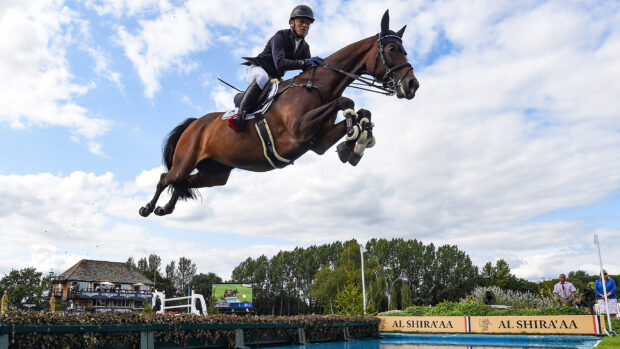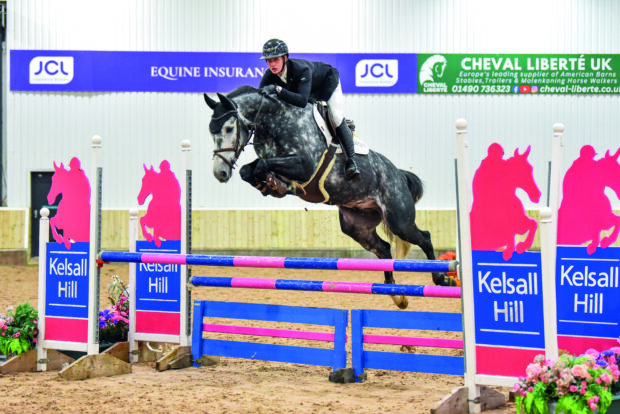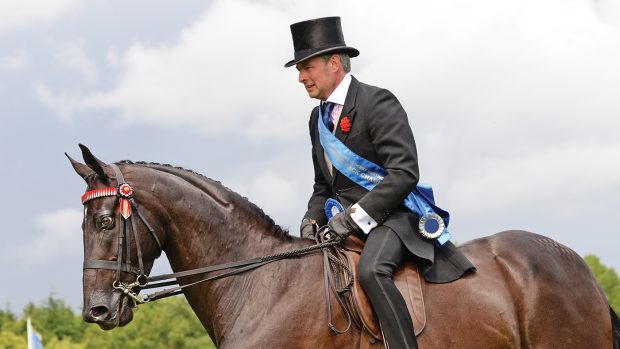H&H’s showing editor Alex Robinson on this year’s highlights from the Royal International Horse Show
We’ve just waved goodbye to this year’s Royal International (RIHS) final, and were treated to another week of top-class showing. Many home-producers came to the fore, as did our much-loved professionals who continue to show us how it’s done.
One of my favourite combinations to watch were the winners of the mini mountain and moorland (M&M) championship, Charlotte Knight, seven, and her Welsh section A mare Thistledown Princess Letizia. Charlotte was one of the smallest jockeys in the ring, and while she was capable in the saddle, her pony took the greatest of care of her; a true first ridden in every sense.
The ridden Arab champion, Cipriana, provided his owner/rider Jade Hateley with a bucket-list moment in the International Arena, having now won at the “big three” – Horse of the Year Show (HOYS), RIHS and Royal Windsor. Jade, who is getting married next year, entered the championship as one of her bridesmaids, Kaitlyn Fairhurst, left the ring as young riders M&M supreme champion on her Welsh section D Thorneyside Royal Command.
In the open hunter championship, Jane Collins represented hard-working home-producers with second in the lightweights on her great galloper San Miguel. Amateur Sophie Openshaw dazzled on her mare, New Illusion, to capture the open riding horse supreme 12 months after they took the amateur equivalent.
Sue Tennant’s exceptional Mulberry Lane once again proved that horses can perform at the top in multiple spheres. He was runner-up in the middleweights, landed the working hunter title for the second year and finally won the supreme horse accolade, shown throughout by Craig Kiddier.
And Alice Homer’s Tidy Town – a much-admired dual flat and working hunter contender – followed suit as he topped the small hunter field. He made H&H’s cover (9 May) after his double Windsor worker and small hunter wins, and is heading to HOYS in both outfits too.
The Weigh To Win awards, presented to the horse with the healthiest body condition score in some classes, continue to have a strong presence, with each winner being called forward to join the final line-up to be presented with their own prize.
The RIHS final continues to thrive without the marking system and as noticed each year, it adds to the sense of anticipation, providing the showing classes with an air of excitement. The judges are working under strict time pressures as always, but the format really works given the amount of space the riders can perform in.
Given this aspect, the original pulled line-ups usually move around, with some combinations even coming up from the depths into a top spot. It really isn’t over until the very end.
Jumping to great heights
Ohe of the highlights of the show for me, as a native pony lover, is the M&M working hunter pony finals. This year’s show was as enjoyable to watch as ever, as the circuit’s most talented combinations performed over the unique course.
While many of the breeds are catered for in the current height sections, are some possibly being excluded? The current split of 122cm, 133cm, 143cm and exceeding 143cm works well for those ponies that are bang on the height, but a challenge is presented to those animals that tether between heights, especially those heavier breed representatives in the 133cm and 143cm categories.
For example, it is an ask for a 13.1hh/13.2hh pony of a heavier stamp to jump these 14hh championship tracks. Similarly, there seems to be a demand for Welsh section Cs sitting at exactly 133cm, leaving a gap for those ponies that might be bigger and have a jump, but might not have the type or temperament to excel on the flat.
I’m not sure what the solution is. Making the tracks smaller and easier for the ponies already competing at this level doesn’t seem like the answer. To do so risks increasing the number of clears too, giving the show and conformation mark more weight and effectively creating a flat class. I’d be interested to hear your thoughts…
● How do you think heavier breeds of ponies should be catered for in working hunter pony classes? Let us know at hhletters@futurenet.com, including your name, nearest town and country, for the chance for your letter to appear in a forthcoming issue of the magazine
- To stay up to date with all the breaking news throughout the Olympic Games, Burghley, HOYS and more, subscribe to the Horse & Hound website
You might also be interested in:

‘I needed to pull it out of the bag’: showman’s first RIHS supreme victory after standout performance

‘He’s some horse’: 19-year-old rider is RIHS pony supreme with young star after final ride-off with teammates

Meet the RIHS senior supreme: the 27-year-old part-bred Welsh who loves to jump

Subscribe to Horse & Hound magazine today – and enjoy unlimited website access all year round




